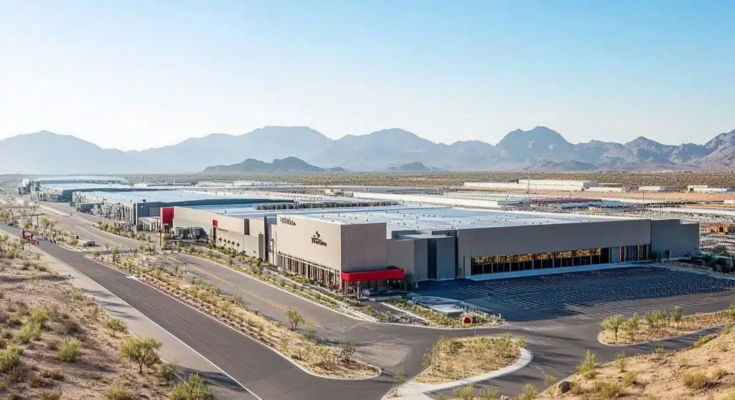Key Takeaways
- The yield of TSMC’s Arizona plant has surpassed that of its Taiwanese counterparts.
- By 2025, the first of three plants in Arizona is expected to be producing at full capacity.
- By 2028, TSMC hopes to open additional facilities, and by 2030, it wants to be producing 2nm chips in the US.
The largest semiconductor manufacturer in the world, TSMC, has outperformed its Taiwan facilities in terms of yield in its new Arizona plant.
In terms of yield, a crucial indicator in the production of semiconductors, the new chipset manufacturing facility in the US of Taiwanese behemoth TSMC has surpassed its domestic facilities. Since the federal government wants to increase domestic chip production in order to reduce its reliance on Chinese supply chains, the news from TSMC’s recently opened plant in Phoenix, Arizona, is encouraging for the US semiconductor industry.
With the exception of earnings calls, TSMC does not publicly disclose yield rates. However, one listener told Bloomberg that Rick Cassidy, the president of its US business, disclosed some information during a webinar in which he was talking about the company’s contribution to the semiconductor sector.
Cassidy claims that TSMC’s Arizona factory produces at least four percentage points more than other Taiwanese manufacturers with comparable capacity. Yield, which determines how many working chipsets can be made per wafer, is a crucial measure of profitability. Nearly all of its American clients, including Nvidia, Apple, Qualcomm, and others, will gain from the breakthrough in addition to TSMC. TSMC began meeting Apple’s chip needs last month by manufacturing 4nm circuits for iPads and other devices.
Additionally, the increased yield shows that the plant is on course to meet its targets for full-volume production by the middle of next year. Despite reports of tensions between Taiwanese and American workers that had previously caused delays, TSMC’s Arizona plant, which began production in April, achieved a production yield comparable to that of the facilities in Taiwan.
The US government is providing incentives to chip manufacturers in an effort to break off relations with Chinese producers and shield itself from geopolitical tensions between China and Taiwan. This includes earlier promises of $6.6 billion in subsidies and an additional $5 billion in loans under the CHIPS Act to support TSMC’s anticipated $65 billion Arizona complex, which would contain three fabrication locations, or fabs.
Its Taiwanese plants are expected to begin producing chips at a 2-nanometer size in 2025, and a third of these factories will be outfitted to do so. TSMC originally projected that manufacturing of 2nm chips in Arizona would commence by the end of the decade, while the second fab is anticipated to start by 2028. The existing facility uses 4nm technology to make chips.



